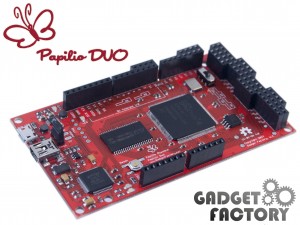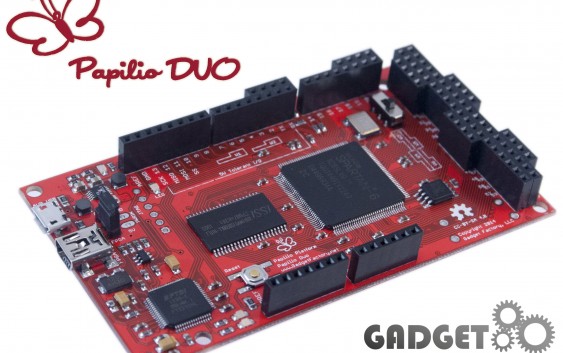Development boards in the field of electronics are the testing grounds for designers. More flexible the development environment faster is the design time. An environment that supports designers to develop test and implement electronic designs, especially digital electronic designs needs to be flexible or in simple words should support make, break and remake system.
Such an environment is provided by Field Programmable Gate Arrays (FPGAs) wherein designers can design digital circuits, implement them, erase and start again. However, one needs to know Hardware Description Languages (HDLs) to develop digital circuits on FPGAs.
Papilio Development Environment
Papilio Development Boards and Environment provide a very flexible way to design circuits. Papilio is a development environment packed with open source soft cores and debugging tools. Papilio utilizes Arduino IDE for this purpose where one can use already available soft cores, debugging tools and lot more.

Papilio offers three boards as of now, One, Duo and Pro. Papilio Duo is a unique blend of FPGA and an Arduino on a single board.
It’s got Wings too!
In addition to that, Papilio boards can be upgraded with shields, wings and MegaWings. Wings are external interface add-on modules consisting of commonly used interface devices and components. Shields consist extended interface hardware like serial ports, micro SD sockets, VGA ports etc. MegaWings provide external interface hardware needed a complete application.
SoC Soft Processor
Papilio includes ZPUino Soft Processor with Wishbone Bus for peripheral interface. One can design different soft processors using a mixture of peripherals together. This essentially means that one can design anything that can be designed!
Circuit Library
Papilio Design Lab provides a Circuit Library of soft cores to design systems. Soft cores like UART, SPI I2C etc. are available.
Papilio Duo in particular is a unique combination of FPGA and Arduino platform on a single development board. FPGAs are capable of handling digital signals efficiently. However, to use FPGAs with analog signals, it’s mandatory to first convert all analog signals to digital signals and then process them. Papilio Duo has ATmega32U4 which is Arduino compatible. Analog signals can be directed first to the Arduino and the digital signals from Arduino can be used for processing by FPGA. That’s a nice way to start…


